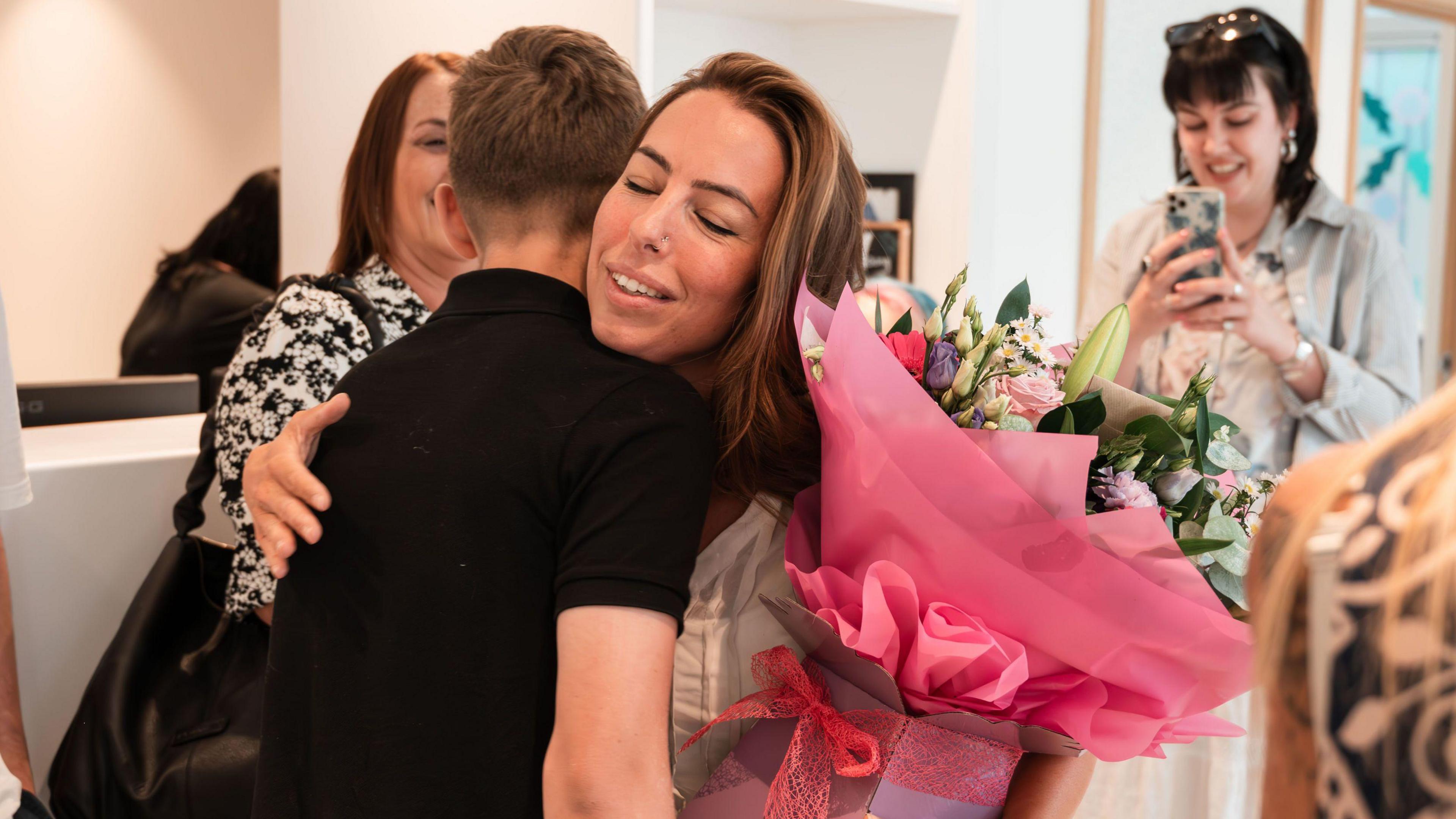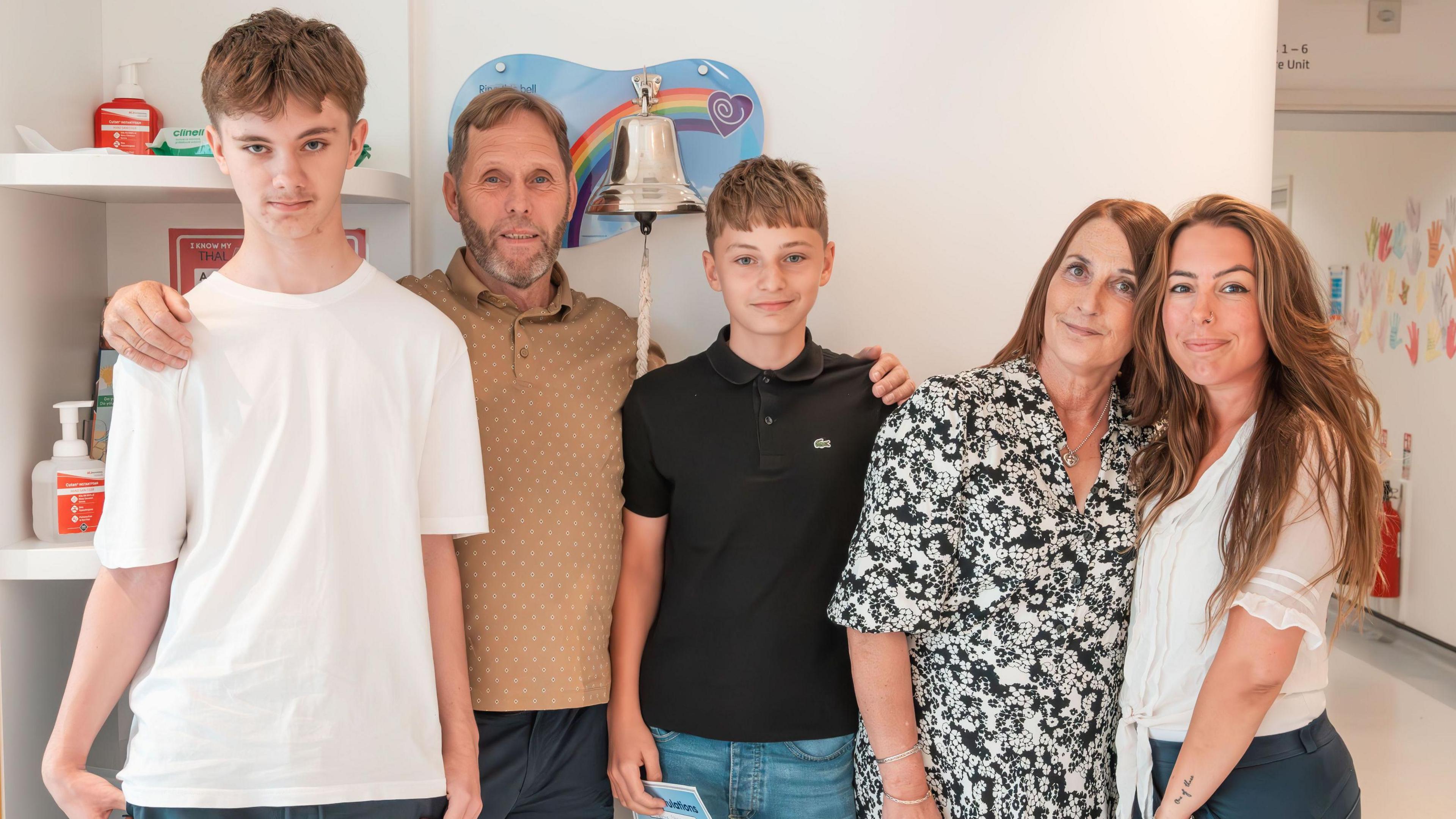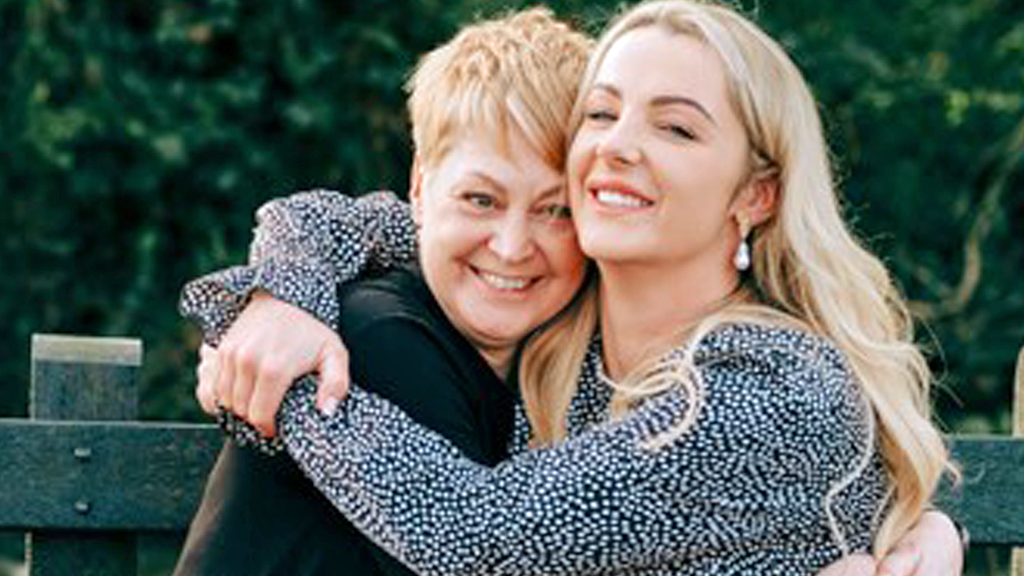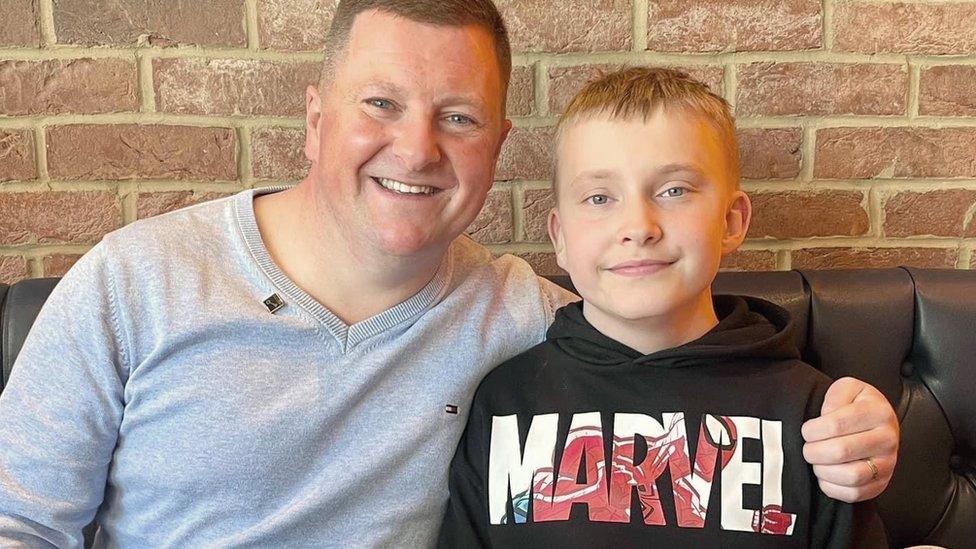Stem cell donor makes surprise bell-ring appearance

George said it was "brilliant" to finally meet his donor
- Published
A teenager said it was "brilliant" to meet his anonymous stem cell donor when she made a surprise appearance as he rang the bell to signal the end of his cancer treatment.
George, 15, from Nottingham, was at Sheffield Children's Hospital when hairdresser, Kimmy Strelley, 38, arrived to help celebrate the landmark moment.
Ms Strelley, from Flitton in Bedfordshire, anonymously donated her stem cells to the teenager via bone marrow in December 2021 after she was found to be one of only a small number of perfect matches worldwide.
"Life is so much better now, and it's been brilliant to meet Kimmy today," George said.
"She's given me another chance to live and meant that moments like today can happen."

Ms Strelley embraced George as they met for the first time
George had been diagnosed with a very rare form of acute lymphoblastic leukaemia, which made it highly aggressive and resistant to standard chemotherapy, Sheffield Children's NHS Foundation Trust said.
This meant a stem cell transplant was his only treatment option.
Ms Strelley was eventually found with the help of charity Anthony Nolan, after George's twin brother, Stephen, was found not to be a match.
The two will now have a lifelong bond because, although George's hair, skin and saliva will always be made of his DNA, his blood will now always show as Ms Strelley's DNA.
'So proud'
Donors and recipients must remain anonymous during the treatment process but they can write to one another, which is what the pair did.
Without knowing who her stem cells were going to at the start, Ms Shelley said she "really hoped it worked".
"I was so excited to be given the chance to donate but I also felt a lot of responsibility because I really cared about helping the person I was donating to," she said.
"I always say that I'm only one piece in the puzzle of George's recovery and having the chance to donate to help him has been the best experience.
"Being here three years later, I just feel so proud of George."

George was joined by members of his family at the bell-ringing ceremony
Before the transplant, George had to have CAR-T cell therapy at Great Ormond Street Hospital in London.
This highly specialist treatment involves removing T cells from the body and altering them in a lab so they can attack cancer cells when they are returned to the body, the trust said.
This meant George's body was in the best place possible for the transplant procedure.
Dr Katharine Patrick, consultant paediatric haematologist at Sheffield Children's Hospital, said: "There really are very few opportunities in life to save another person's life but that is exactly what Kimmy has done for George."
George - who is named after the IVF consultant who helped his parents conceive after 20 years of trying - said he was now looking forward to playing "lots of football".
Get in touch
Tell us which stories we should cover in Nottingham
Follow BBC Nottingham on Facebook, external, on X, external, or on Instagram, external. Send your story ideas to eastmidsnews@bbc.co.uk, external or via WhatsApp, external on 0808 100 2210.
Related topics
- Published21 September 2024

- Published20 July 2024

- Published30 December 2023
